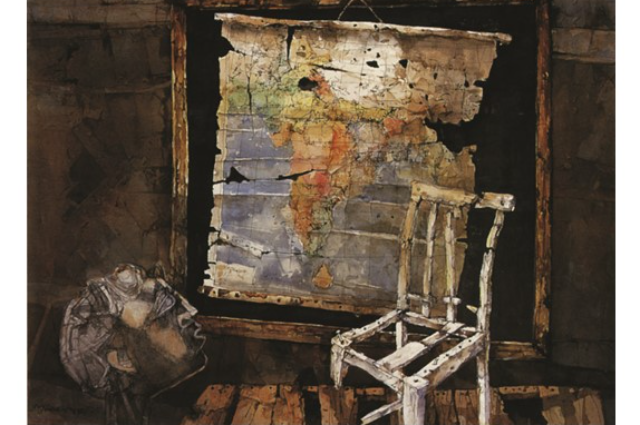
Photo by Steve Johnson on Unsplash
“What do you do?”
“I paint.”
“That’s perfectly OK. But what do you do?”
“I paint.”
“Oh! Oh!”
I had heard about this conversation held between my relatives and my father, much before my birth, umpteen number of times. My father, who had chosen to be a painter, had faced mountains of obstacles before embarking upon his career. During his time – that was the time of pre-Independence – to take up the field of art, especially painting, was considered to be a bit extraordinary. Well, surmounting all these hardships, he (my father) had pursued his craft with a devotion that showed many, many years later onwards.
To take up fine arts, especially painting, as a profession was unthinkable during his time. Baba had enrolled himself at the Government College of Arts & Crafts in Calcutta, amidst strong family opposition. The only member who had supported him throughout was his mother – my grandmother. This mental pillar of strength and support was much needed and was passed on later to my mother, Ila. When Baba was a student at the Government Art College, water color was the medium by which landscape painting was taught. Baba finished his course there but harbored a dissatisfaction in his heart. This precisely was what egged him onwards.
Soon he began a career in water color painting on his own. Breaking free from the cliched barrier of traditional landscapes, he began painting his works which had a strong social comment in them. So he started his ‘Broken Bowl’ series which was destined to gain momentum, appreciation, and popularity in later years. The argument of my father had been, “My Broken Bowl is a metaphor for the penury that surrounds us. It is also a mimicry of the social milieu in a way that the begging bowl of an alms-seeker is also broken.” Well, when Baba broke away from tradition, he faced criticisms as well as strong walls of protest.
At the College, among the illustrious painters who taught him was Gopal Ghose, whose landscapes were milestones in the Bengal School of Art tradition. Baba, after his graduation from the Art College, had participated in an all-India painting exhibition and his work was adjudged as worthy of receiving the President’s Gold Medal. Baba was handed over the Medal by none other than the then-President of India, Dr. Sarvapalli Radhakrishnan. This happened in the late fifties of the last century. Oh, what glorious years those had been!!
Slowly Baba’s forte became the medium of water color. Friends and relatives, living abroad in those days (and the years were so much before the Covid and Omicron scare!) used to bring water color tubes of brands like Winsor & Newton and such others. Baba always insisted on the quality of these tubes.

“Our Indian brands are yet to reach the finesse and superior quality of the foreign manufacturers.”
When I was still a teenager (and that’s many moons ago) I’d heard Baba saying this and it still rings in my ears. My father, Shyamal Dutta Ray, reached newer heights of excellence in water color painting. As long as he was alive, he painted with almost a manic frenzy. He added depth in a way that his paintings ultimately became a social commentary on the life that we led. Sometimes social, at other times a bit political, his paintings marked a crescendo in the technique of water colors in Indian art. He had also been called “Turner of Indian Art”. The British painter J M W Turner’s landscapes done in water color hardly needs any introduction.
From those days when he’d been asked what he did for a living besides painting, to the day when Christie’s Auction House in London auctioned one of his paintings, with all three of us sitting in the front row, it had never been smooth sailing for Baba. But I guess the spirit to dream newer dreams kept him going till the last day of his life, as it does for any other artist, residing in any part of the world, at any given time.
But dreams, by their very nature, defies categorization and my father had been a dreamer throughout the years he had been alive.
